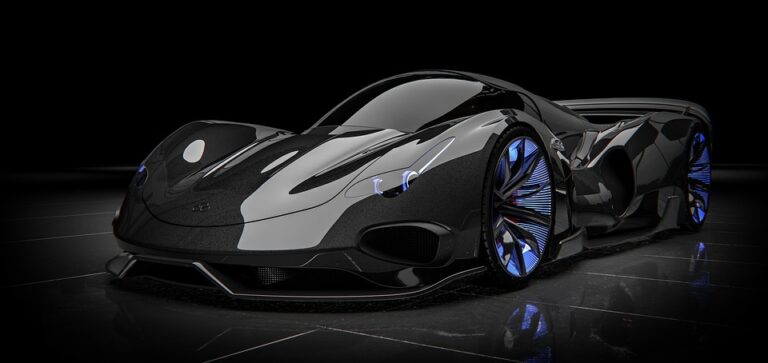Women in Automotive Design: Pioneers and Their Impact on the Industry
In a traditionally male-dominated sphere, women are making significant strides in automotive design, passionately shaping the industry’s future. This article explores the dynamic role of female designers, highlighting their pioneering contributions and the profound impact they have had on automotive design.
The Rise of Women in Automotive Design
For decades, the automotive industry has been synonymous with innovation and technology. Yet, despite its advancements, it often overlooked the unique perspectives that women bring to the table. Today, however, this narrative is changing. Women are not just participating; they are leading, influencing, and redefining automotive design.
Breaking Barriers
Women like Margaret Wilcox, who invented the first-known car heater in the late 1800s, paved the way for future generations. Her ingenuity exemplifies how women have historically contributed to the automotive industry, even when their efforts went unrecognized. Fast forward to today, and we see numerous female designers stepping into leadership roles, breaking barriers in what was once a boys’ club.
A Shift in Perspective
As more women enter the field of automotive design, the industry begins to embrace fresh perspectives. With unique insights into user experience, women designers are reshaping everything from the aesthetic aspects of vehicles to functional designs that prioritize safety and convenience.
Notable Pioneers in Automotive Design
Several women have carved out remarkable careers in automotive design, leaving legacies that inspire a new generation.
J Mays
J Mays, a renowned designer, played a pivotal role in shaping iconic vehicles for Ford Motor Company. His work on the Ford GT and modern interpretations of classic models demonstrates how innovative design can bridge the gap between the past and the future. While Mays himself is not female, he has mentored countless women in the industry, emphasizing the importance of diversity in automotive design.
Sue Callaway
Sue Callaway is another significant figure, known for pioneering efforts in automotive digital media. As the editor of "Automotive News," she has contributed enormously to discussions about design and innovation, providing a platform for female voices in the industry. Her insights help demystify automotive design, making it more accessible to a broader audience.
Ellen Lee
Likewise, Ellen Lee, a prominent designer at Ford, is known for her concept vehicle work, including the Ford Explorer. Her designs focus on integrating environmental sustainability with aesthetic appeal, demonstrating the essence of modern automotive design — blending form and function.
The Impact of Diversity
Enhanced Creativity
The inclusion of women in automotive design is more than just a matter of equality; it enhances creativity within the industry. A diverse workforce fosters an environment where varied ideas and experiences can amalgamate, resulting in innovative designs that are more relatable to a wider consumer base. Women designers often place a strong emphasis on ergonomics and aesthetics, thus improving user experience significantly.
Meeting Consumer Needs
Women now make up a substantial portion of car buyers. Their preferences and needs influence market trends, making it essential for automotive designers to consider this demographic. Female designers can better cater to these needs, ensuring that products resonate with women consumers.
Leadership and Mentorship
Establishing inclusive leadership is vital for the continued progress of women in automotive design. Organizations like the Women’s Automotive Summit and Society of Automotive Engineers focus on mentorship, networking, and skill development for aspiring female designers. These initiatives aim to inspire future leaders who can continue to push for equity and innovation in the industry.
Overcoming Challenges
Despite notable progress, women in automotive design still face challenges. Gender bias, lack of representation, and limited opportunities for growth can hinder their advancement. To combat these issues, firms must actively promote inclusive cultures that empower women at all levels of the design process.
Building Networks
Women can benefit greatly from building networks within the industry. Participating in forums, workshops, and events dedicated to female designers can provide them with the connections and knowledge necessary for personal growth and professional advancement.
Conclusion: The Future of Automotive Design
Women are at the forefront of transforming automotive design by infusing it with their diverse perspectives and creativity. As we acknowledge the contributions of pioneers and support the next generation of female designers, the automotive industry stands poised for a revolutionary shift. Embracing diversity will not only create a more equitable environment but also promote innovation that meets the evolving needs of consumers.
As we look ahead, it’s clear that women’s influence will only continue to grow, shaping a more inclusive and dynamic future in automotive design. For those aspiring to enter this thrilling field, remember that every great journey starts with a single step—take yours today.
By exploring the narratives of trailblazing women in automotive design, we can appreciate not only their past contributions but also the emerging opportunities that lie ahead. Let’s celebrate these pioneers and champion the path for future innovators in the industry.


